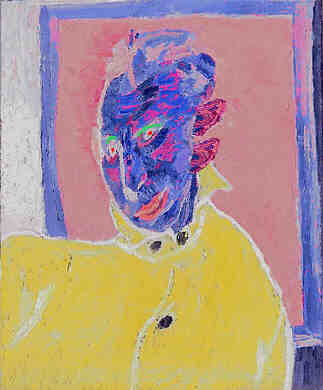^
Born on 07 December 1598: Gian Lorenzo
Bernini, Italy, greatest Baroque sculptor in Italy, also an architect,
painter, and dramatist, the last of Italy's remarkable series of universal
geniuses. He died on 28 November 1680.
— Cet architecte dit "Le Cavalier Bernin "est aussi peintre et sculpteur.
On lui doit, sous la Renaissance la grande colonnade de Saint Pierre à Rome
(1656-1657). Il fut appelé en France par Louis XIV pour achever le Louvre,
mais ses plans furent refusés.
— Bernini is the single most important artistic talent of the Italian
baroque. Although most significant as a sculptor, he was also highly gifted
as an architect; painter; draftsman; designer of stage sets, fireworks displays,
and funeral trappings; and playwright. His art is the quintessence of high
baroque energy and robustness. In sculpture his ability to suggest textures
of skin or cloth as well as to capture emotion and movement was uncanny.
Bernini reformed a number of sculptural genres, including the portrait bust,
the fountain, and the tomb. His influence was widespread throughout the
17th and 18th centuries and was felt by such masters as Pierre
Puget from France, the Italian Pietro Bracci, and the German Andreas
Schlüter.
The life of Bernini was dominated by his
work, and his biography is defined by the immense number of projects he
undertook. His career developed almost entirely in Rome, although he was
born in Naples. His father, Pietro Bernini, a talented sculptor of the late
Mannerist style, was his son's first teacher. Young Gian Lorenzo soon surpassed
his father in excellence, however. Many of Bernini's early sculptures were
inspired by Hellenistic art. The Goat Amalthea Nursing the Infant Zeus
and a Young Satyr (redated 1609) typifies the classical taste of the
youthful sculptor. Group sculptures by earlier masters such as Giambologna
were noted for their Mannerist multiple views. Bernini's groups of the 1620s,
however, such as the Abduction
of Proserpina (1622) present the spectator with a single primary
view while sacrificing none of the drama inherent in the scene.
From the 1620s also date Bernini's first
architectural projects, the façade for the church of Santa Bibiana
(1626), Rome, and the creation of the magnificent baldachin (1633), or altar
canopy, over the high altar of Saint Peter's Basilica. The latter commission
was given to Bernini by Pope Urban VIII, the first of seven pontiffs for
whom he worked. This project, a masterful feat of engineering, architecture,
and sculpture, was the first of a number of monumental undertakings for
St. Peter's. Bernini later created the tombs of Urban
VIII (1647) and Alexander
VII (1678) that, in their use of active three-dimensional figures,
differ markedly from the purely architectural approach to the sepulchral
monument taken by previous artists. Bernini's immense Cathedra
Petri (1666), in the apse of St. Peter's, employs marble, gilt bronze,
and stucco in a splendid crescendo of motion, made all the more dramatic
by the golden oval window in its center that becomes the focal point of
the entire basilica.
Bernini was the first sculptor to realize
the dramatic potential of light in a sculptural complex. This was even more
fully realized in his famous masterpiece Ecstasy
of Saint Teresa (1652), in which the sun's rays, coming from an unseen
source, illuminate the swooning saint and the smiling angel about to pierce
her heart with a golden arrow. Bernini's numerous busts also carry an analogous
sense of persuasive dramatic realism, be they allegorical busts such as
the Damned Soul and Blessed Soul (both 1619), or portraits
such as those of
Cardinal Scipione Borghese (1632) or Louis
XIV of France (1665).
Bernini's secular architecture included designs
for several palaces: Palazzo Ludovisi (now Palazzo Montecitorio, 1650) and
Palazzo Chigi (1664), in Rome, and an unexecuted design for the Louvre presented
to Louis XIV in 1665, when Bernini spent five months in Paris.
He did not begin to design churches until
he was 60 years old, but his three efforts in ecclesiastical architecture
are significant. His church at Castelgandolfo (1661) employs a Greek cross,
and his church at Ariccia (1664), a circle plan. His third church is his
greatest. Sant' Andrea al Quirinale (1670) in Rome was constructed
on an oval plan with an ovoid porch extending beyond the facade, echoing
the interior rhythms of the building. The interior, decorated with dark,
multicolored marble, has a dramatic oval dome of white and gold.
Also dating from the 1660s are the Scala
Regia (1666), connecting the papal apartments in the Vatican Palace
to St. Peter's, and the magnificent Piazza
San Pietro (designed 1667), framing the approach to the basilica
in a dynamic ovular space formed by two vast semicircular colonnades. Bernini's
most outstanding fountain group is in the spectacular Fountain
of the Four Rivers (1651) in the Piazza
Navona. Bernini remained a vital and active artist virtually up
to the last day of his life. His final work, Bust of the Savior,
presents a withdrawn and restrained image of Christ indicative of what is
now known to have been Bernini's calm and resigned attitude toward death.
^ |
 ^
Born on 07 December 1894: Stuart Davis
[self~portrait >], US Abstract painter who died 24 June 1964.
^
Born on 07 December 1894: Stuart Davis
[self~portrait >], US Abstract painter who died 24 June 1964.